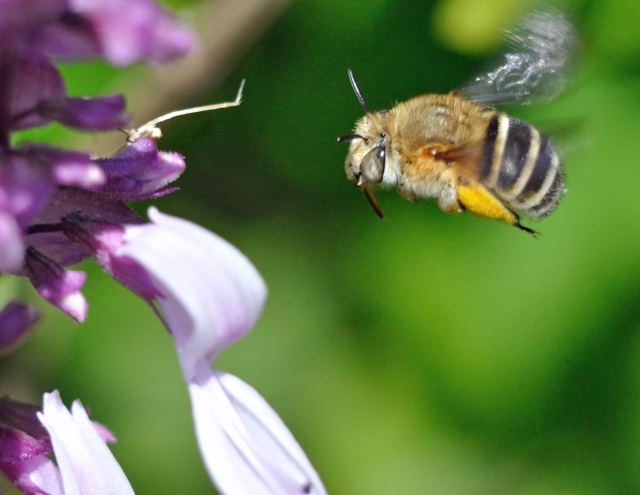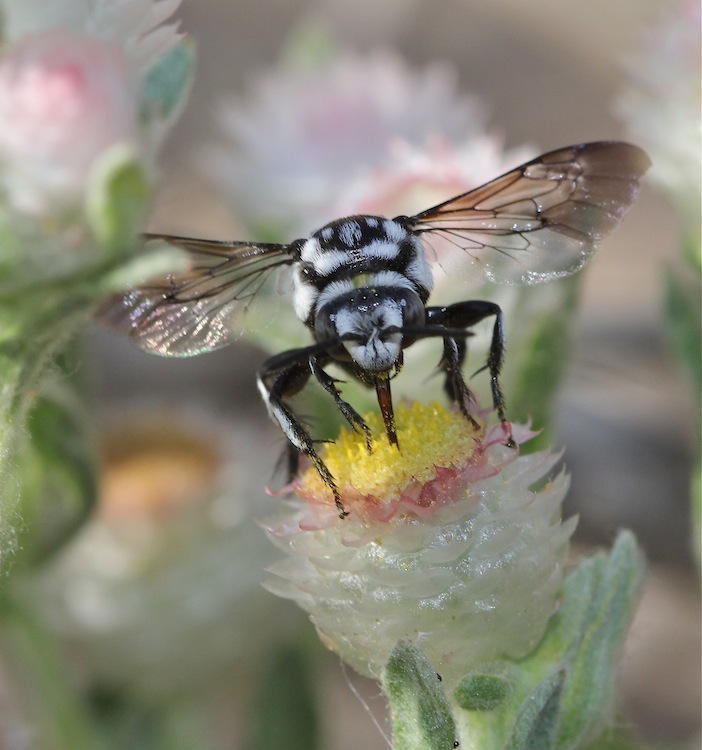Honey Bee Apis mellifera
Family: Apidae. Subfamily Apinae. Tribe: Apini


© BluTuna
Garden in Johannesburg
Drone, Nelspruit © Richprins
Apis mellifera has a worldwide (native to Old World, but introduced to New World: North & South America). In South Africa two subspecies are found.
Apis mellifera scutellata African Honey Bee
Distribution
Native to Central and Southern Africa, but introduced to New World: North & South America (Africanized or Killer bees).
Biology
Social, constructing multiple wax combs for storage of pollen and honey and raising brood. The African bee is being threatened by the introduction of the Cape honey bee into northern South Africa. If a female worker from a Cape honey bee colony enters an African bee nest, she is not attacked, partly due to her resemblance to the African bee queen. Now independent from her own colony, she may begin laying eggs, and since A. m. capensis workers are capable of parthenogenetic reproduction, they will hatch as "clones" of herself, which will also lay eggs. As a result the parasitic A. m. capensis workers increase in number within a host colony. This leads to the death of the host colony on which they depend.
Apis mellifera capensis Cape Honey Bee
Distribution
South Africa (winter rainfall areas in the Western & Eastern Cape Provinces). The Cape honeybee occurs in the fynbos biome along the southwest and south coasts of South Africa extending into the interior as far as the mountains bordering on the Klein Karoo. From here it hybridizes with
A. m. scutellata to the next mountain ranges near latitude 32 where hybrids fall away.
Workers of the Cape honey bee
Apis mellifera capensis started to parasitize the African honey bee
A. m. scutellata after being introduced into Gauteng

.
Biology
Social, constructing multiple wax combs for storage of pollen and honey and raising brood. Nests in existing cavities. The Cape honey bee invades and takes over colonies of the African honey bee
Apis mellifera scutellata. They are unique among honey bee subspecies because workers can lay diploid, female eggs, while workers of other subspecies (and, in fact, unmated females of virtually all other eusocial insects) can only lay haploid, male eggs.
Links:
WaspWeb - Apis mellifera capensis;
Wikipedia: African Bee;
Featured Creatures: Cape honey bee;
WaspWeb - Apis mellifera scutellata;
SANBI
Hunting cannot be considered a sport as all contestants in a sport should know they are playing the game!
 © Super Mongoose
© Super Mongoose © Super Mongoose
© Super Mongoose © BluTuna
© BluTuna © BluTuna
© BluTuna © BluTuna
© BluTuna
 © BluTuna
© BluTuna © ExFmem
© ExFmem © ExFmem
© ExFmem